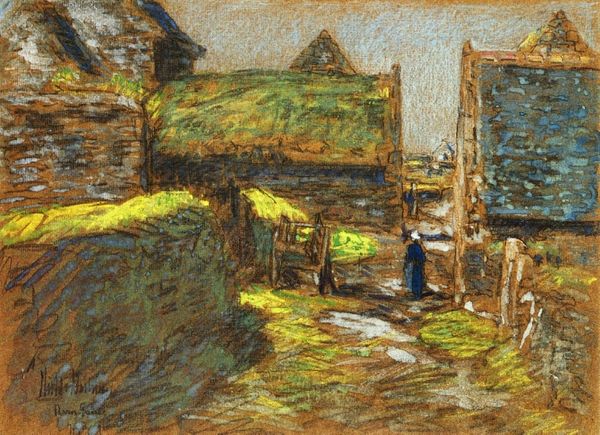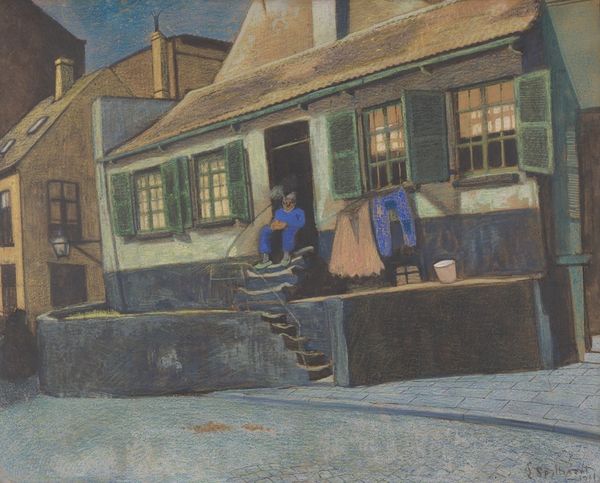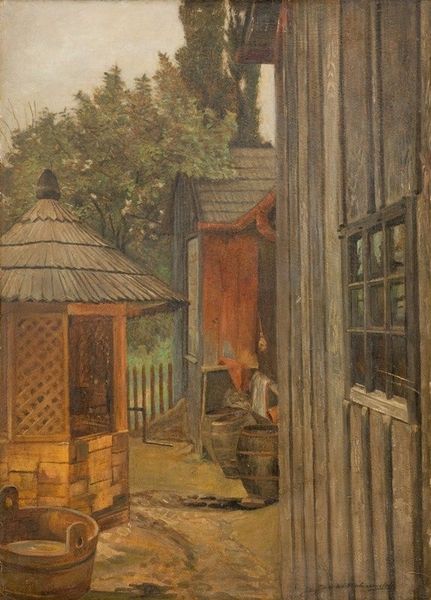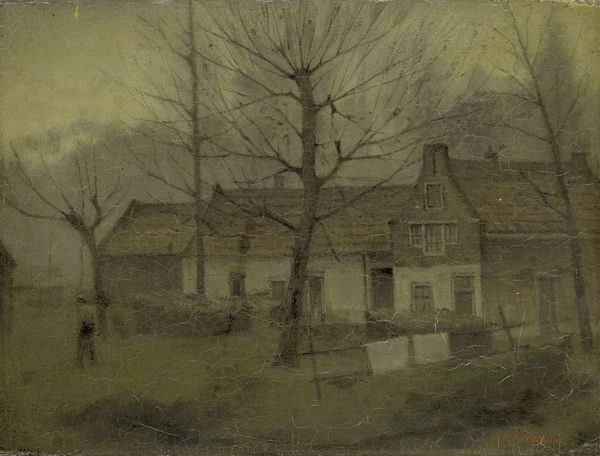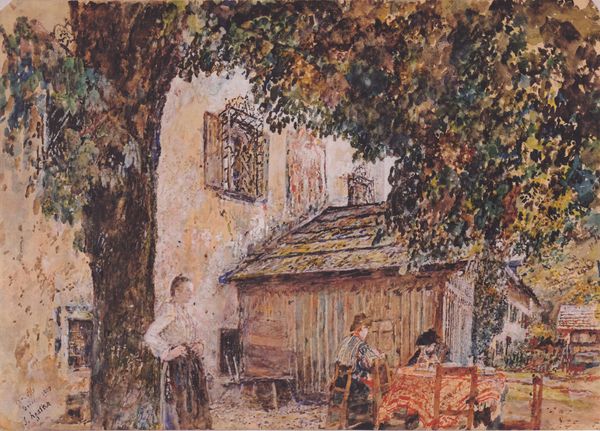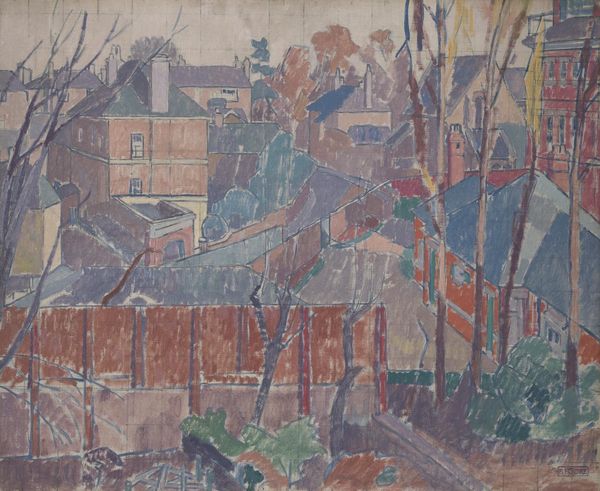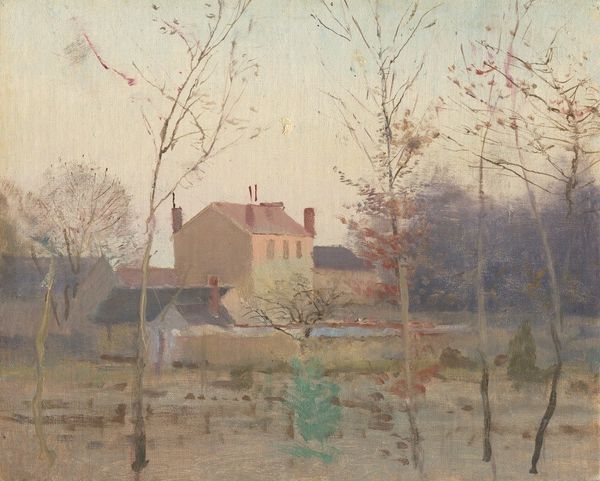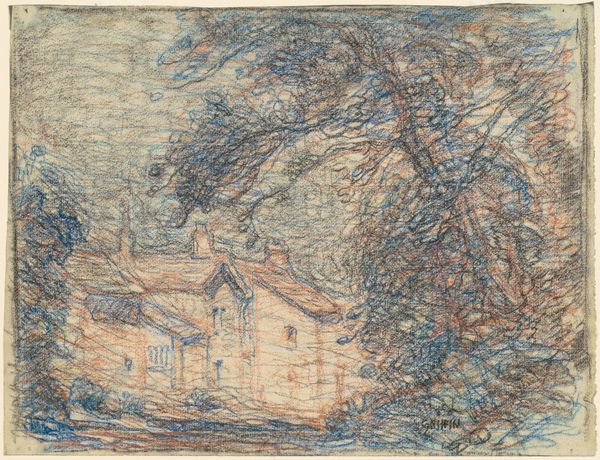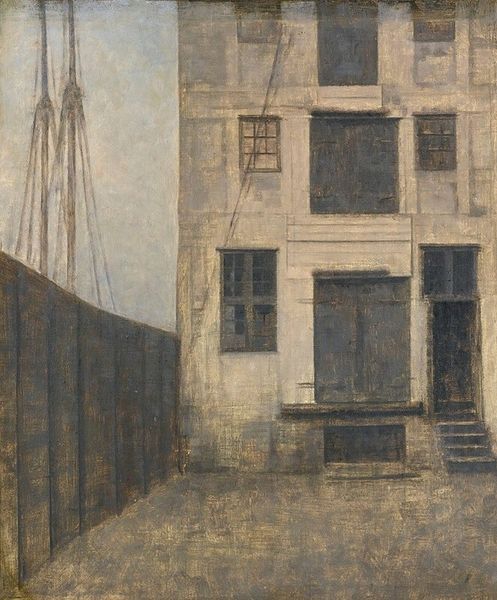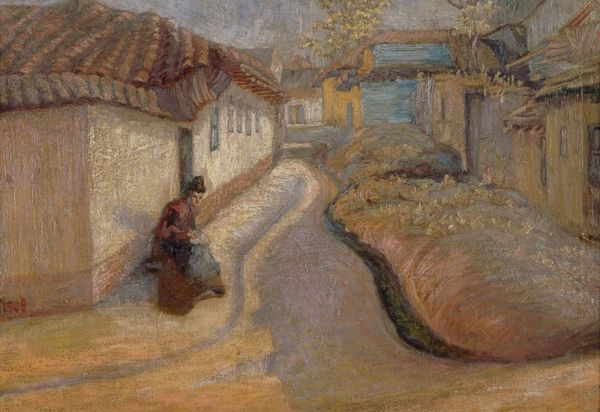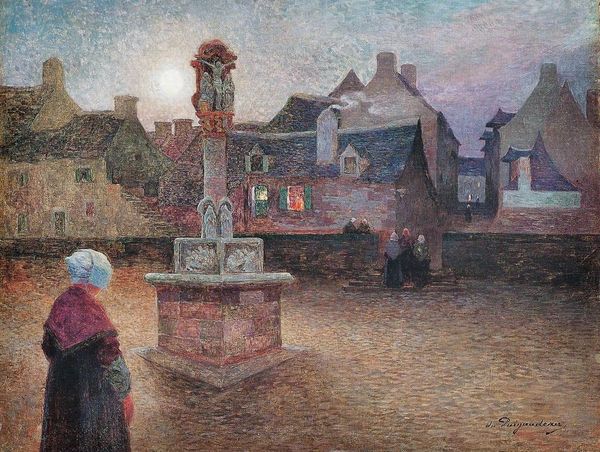
drawing, paper, pencil, graphite, architecture
#
drawing
#
dutch-golden-age
#
impressionism
#
landscape
#
figuration
#
paper
#
form
#
pencil
#
line
#
graphite
#
cityscape
#
genre-painting
#
northern-renaissance
#
architecture
#
realism
Dimensions: 29 x 45.5 cm
Copyright: Public domain
Editor: Here we have Vincent van Gogh's "Sien's Mother's House Seen from the Backyard," a pencil and graphite drawing on paper from 1882. I find the lines creating the buildings and reflection quite interesting but also a little… oppressive? What do you see in this work? Curator: I notice the palpable weight of labor embedded in the graphite. The repetitive marks that define the architecture, the fence—consider them not just representations but also indexes of Van Gogh's physical act of making. We see his labor and a working-class home as one. Editor: That's an interesting way to frame it, relating the labor of representation to that of the subject matter. What does it tell us? Curator: Precisely. It speaks to the accessibility, the "low" materials—paper, pencil, graphite—employed to depict the quotidian life. There’s no high art illusion here. This connects Van Gogh, the artist, with Sien's mother and the community around her. The subject matter and the medium become democratized, blurring boundaries of labor, class, and art-making itself. Editor: So you're saying the materials themselves reject the separation of high art and everyday life? Curator: Absolutely. The social reality is literally drawn out by humble means. The materiality underlines Van Gogh’s empathy, a sort of social document constructed from the ground up, you could say. The value lies not in an elevated aesthetic, but the sheer labor and the accessible materials bringing awareness of the marginalized to our sight. Editor: That really shifts how I see it, understanding the work as a document reflecting a lived reality constructed through everyday materials. Curator: Yes, it moves past a picturesque depiction into something that almost demands we consider its own production and purpose.
Comments
No comments
Be the first to comment and join the conversation on the ultimate creative platform.
